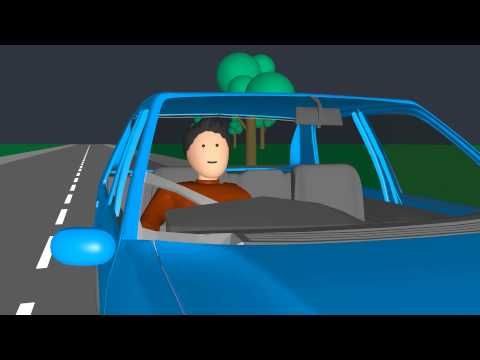Lights and horns
Drive safely on NSW roads by using vehicle lights and horns appropriately. Learn when to use fog lights, high beam, hazard lights and horns.
Lights
About a third of car crashes occur at night. Pedestrians, bicycles and motorcycles are harder to see at night than during the day.
At night or when there’s not enough daylight to see a person wearing dark clothing at a distance of 100m, your vehicle must have clearly visible:
- headlights
- tail lights
- number plates
- clearance lights and side marker lights, if fitted to your vehicle.
Headlights
Using your vehicle’s day running lights improves the likelihood of other road users seeing you. If your vehicle is not fitted with day running lights, you can use your headlights on low beam.
Your headlights must be on:
- when driving between sunset and sunrise
- at any other time where there’s not enough daylight to see a person wearing dark clothing at a distance of 100m.
High beam lights
You can use your headlights on high beam if you need to see further ahead, even if there are street lights.
You must turn your headlights from high beam to low beam:
- when a vehicle coming towards you is within 200m
- when driving 200m or less behind another vehicle.
You can also flash your high beam lights before you overtake another vehicle.


Fog lights
You must only use your fog lights in fog or rain, or when other conditions limit your vision, such as smoke or dust.
Once conditions improve and you can see more clearly, you must switch the fog lights off.
If your vehicle does not have fog lights, you can use your low beam headlights and hazard lights in fog or rain.
Hazard lights
Hazard lights (or hazard warning lights) are flashing orange or red lights on a vehicle.
You must only use your hazard lights when your vehicle is stopped in a hazardous position, for example, when obstructing other vehicles or pedestrians, or when you’re driving in hazardous conditions such as fog or rain.
Avoid lights that dazzle
Do not use or fit lights to your vehicle that could dazzle or distract other road users.
Avoid looking straight at the headlights of oncoming vehicles. If you’re dazzled or your vision is blurred by the glare of high beam lights, look to the left side of the road and drive to the left of your lane. Slow down or stop out of the line of traffic until your eyes recover.
Horns and other warning devices
You must not use your horn or any other warning device, unless:
- you need to warn other road users about the position of your vehicle
- you need to warn others that you are approaching
- you need to warn animals to get off the road
- it’s part of an anti-theft or alcohol interlock device.
Never use your horn to scare or intimidate other road users, particularly bicycle riders, pedestrians and horse riders.
Using headlights and foglights

Road rules: headlights
Revise rules on using headlights and foglights in this short Transport video animation.